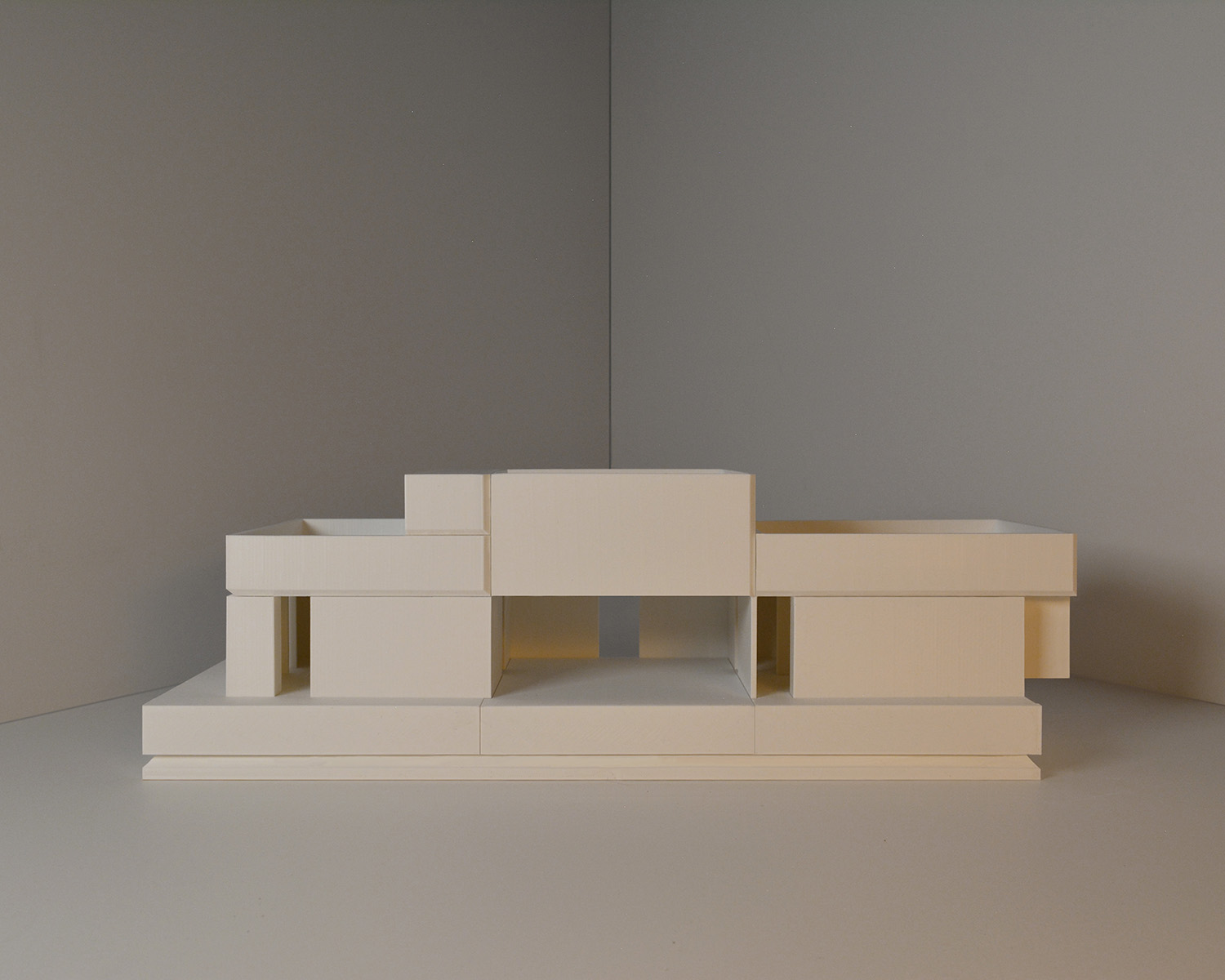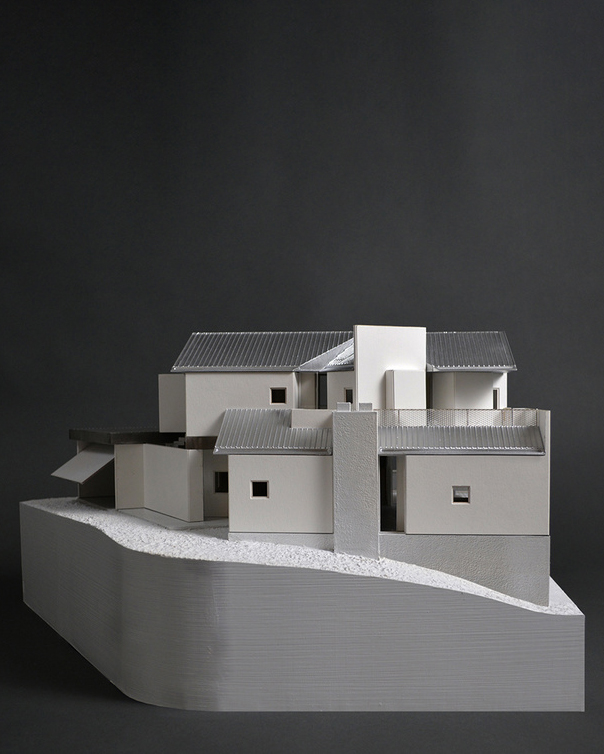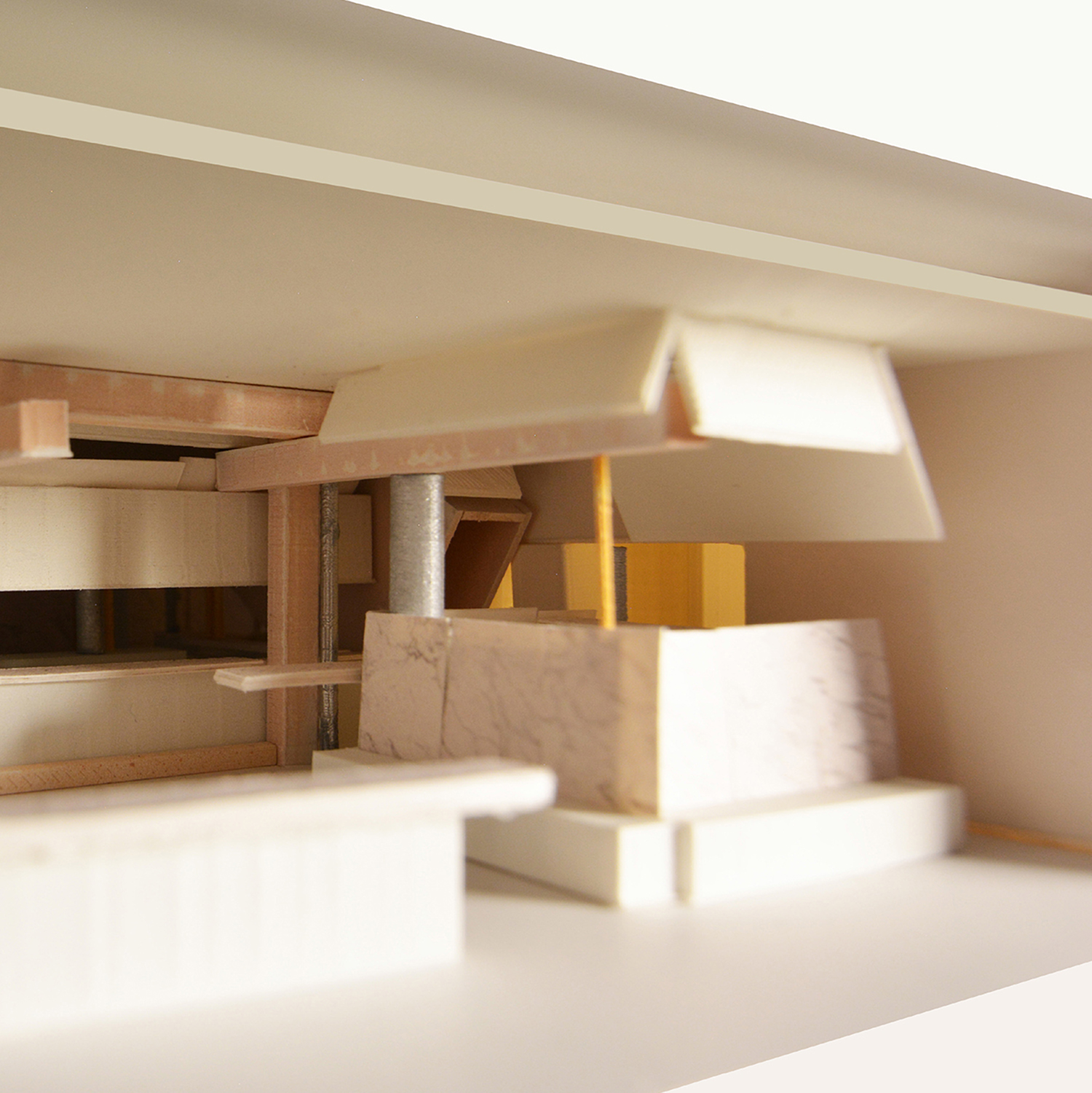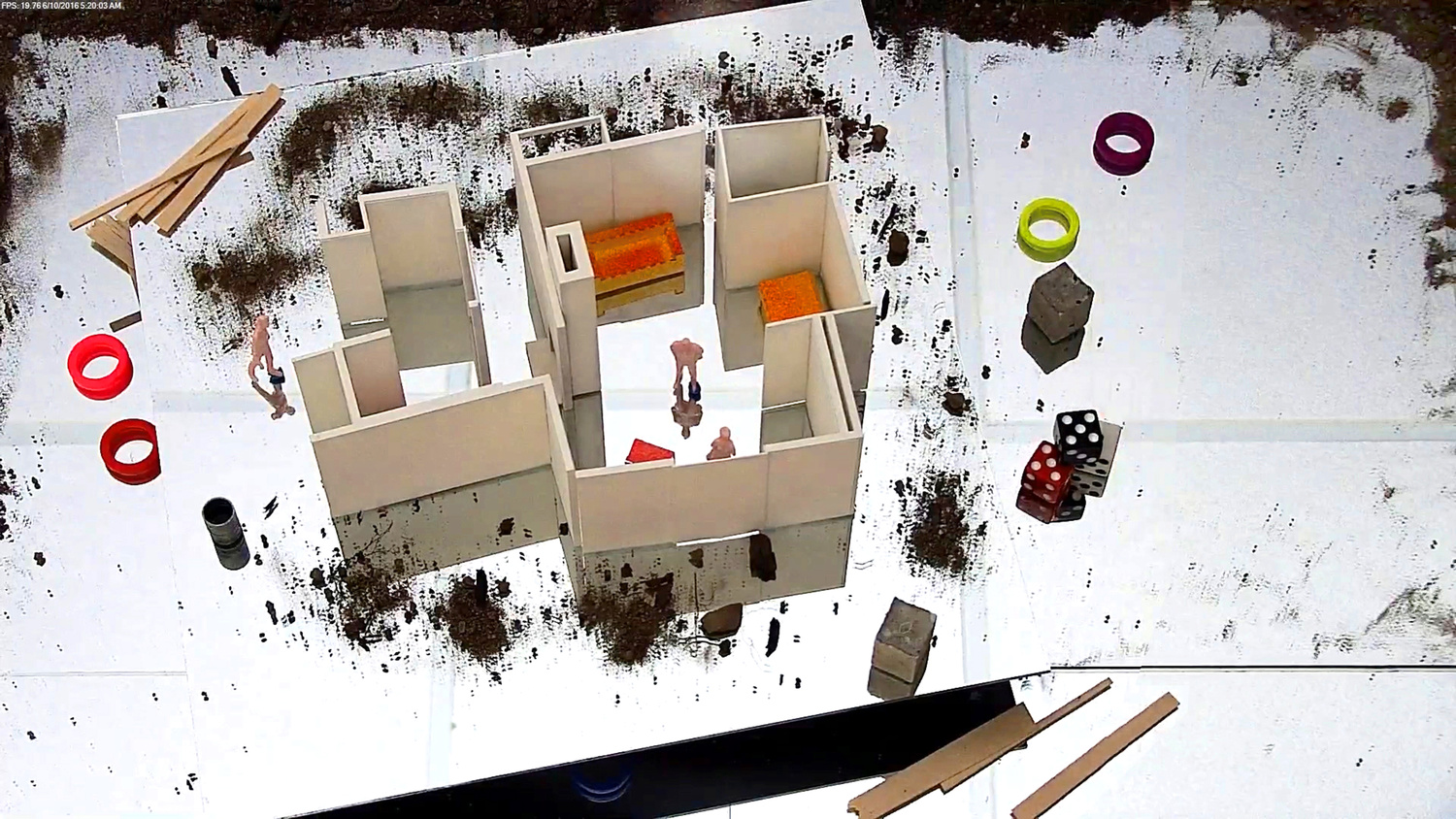On Sufficient Density
Location
New York, NY
Year
2016
Status
Complete
New York, NY
Year
2016
Status
Complete
Project Lead
Andrew Holder
Andrew Holder
Andrew Holder. “On Sufficient Density.” Log #38. New York: Anyone Corporation. 2016.
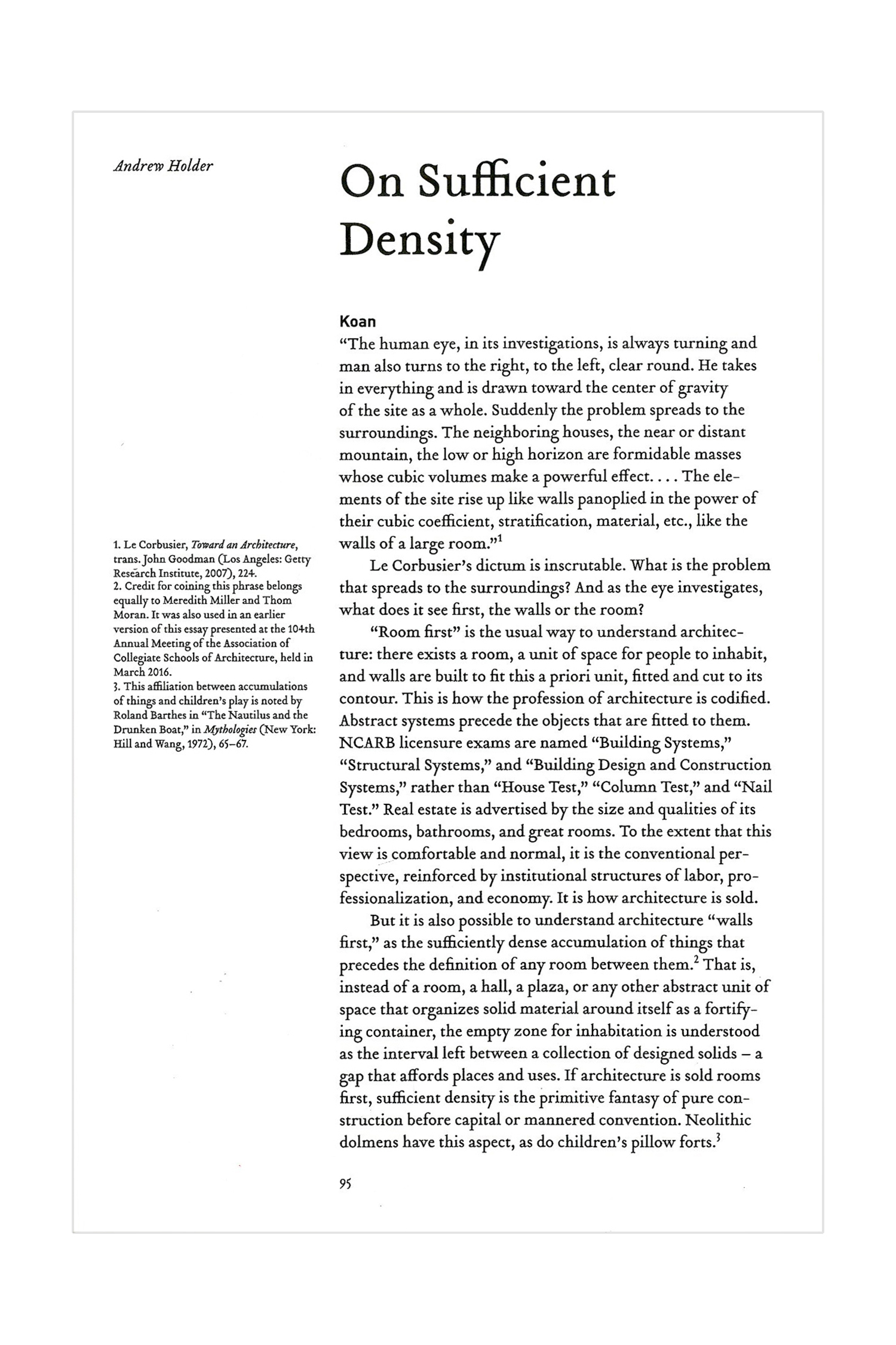
"...it is also possible to understand architecture “walls first,” as the sufficiently dense accumulation of things that precedes the definition of any room between them. That is, instead of a room, a hall, a plaza, or any other abstract unit of space that organizes solid material around itself as a fortifying container, the empty zone for inhabitation is understood as the remainder left between a collection of designed solids – a gap that affords places and uses. If architecture is sold rooms first, sufficient density is the primitive fantasy of pure construction before capital or mannered convention. Neolithic dolmens have this aspect, as do children’s pillow forts.
In fact, architecture can always be read in this way, as a sufficiently dense accumulation of things. Sometimes it’s easy: a primitive hut of whole tree trunks – each one as separate, unitary, and only incidentally related to its neighbors as a stack of sculptures – produces shelter only as a by-product. Other times the reading is a more difficult exercise, as with Bentham’s Panopticon, which, as an array of cells distributed with respect to an imaginary eye, is an almost perfect translation of abstract spatial order into concrete material. But even a prison cell eventually yields to a blunt enumeration of its constituent things. From the abject prisoner’s point of view, he is stuck between four walls, a floor, and a ceiling."
- Andrew Holder
In fact, architecture can always be read in this way, as a sufficiently dense accumulation of things. Sometimes it’s easy: a primitive hut of whole tree trunks – each one as separate, unitary, and only incidentally related to its neighbors as a stack of sculptures – produces shelter only as a by-product. Other times the reading is a more difficult exercise, as with Bentham’s Panopticon, which, as an array of cells distributed with respect to an imaginary eye, is an almost perfect translation of abstract spatial order into concrete material. But even a prison cell eventually yields to a blunt enumeration of its constituent things. From the abject prisoner’s point of view, he is stuck between four walls, a floor, and a ceiling."
- Andrew Holder



